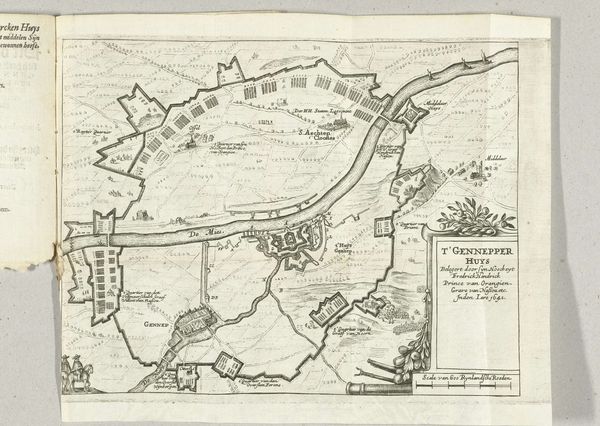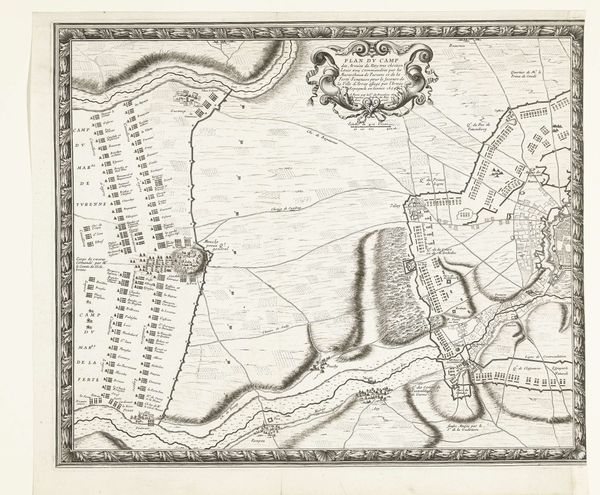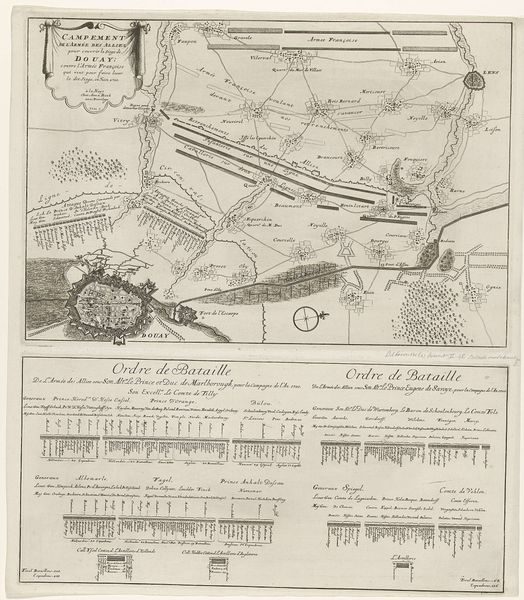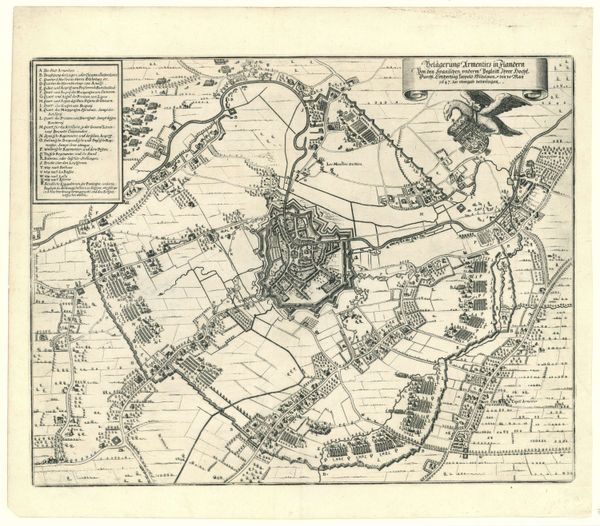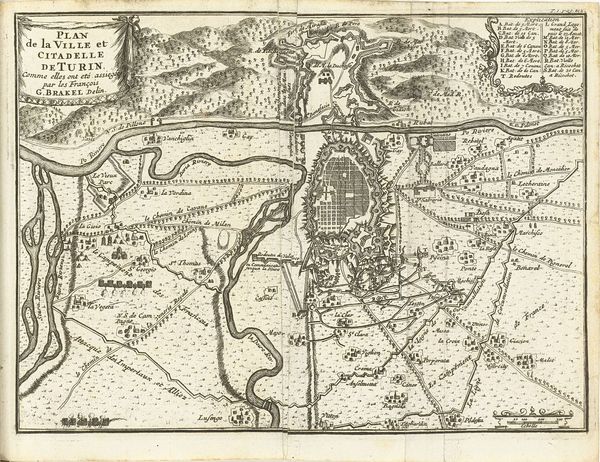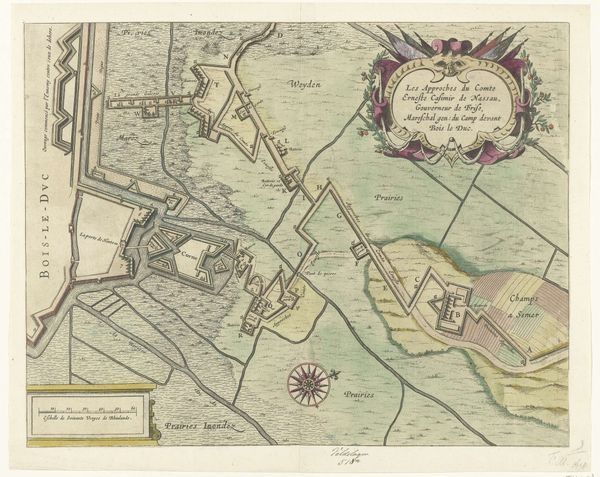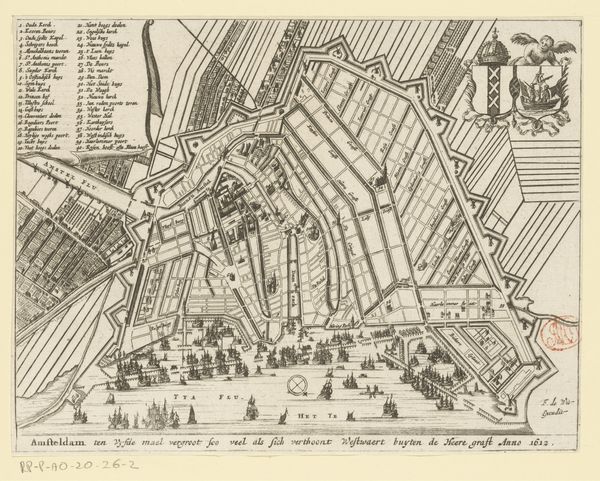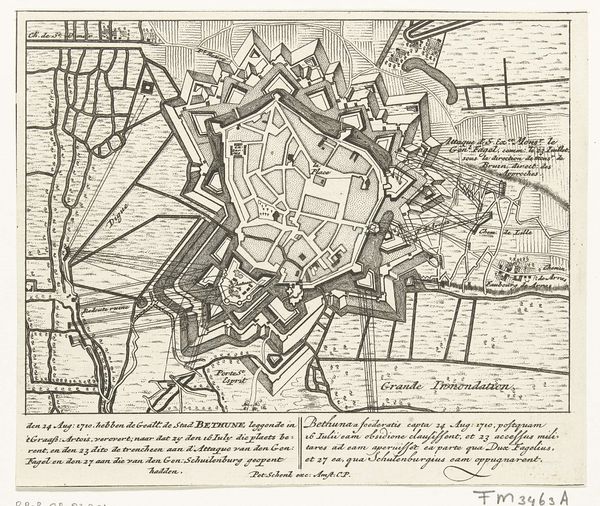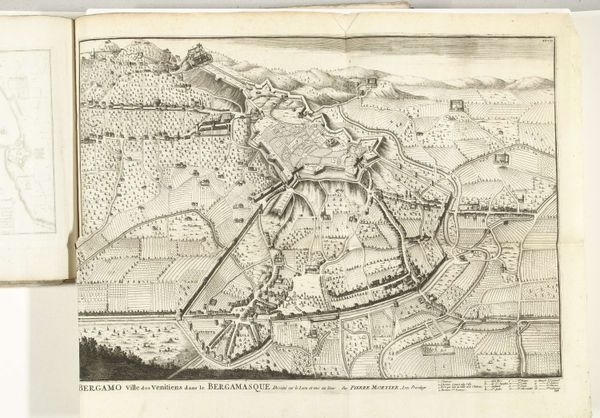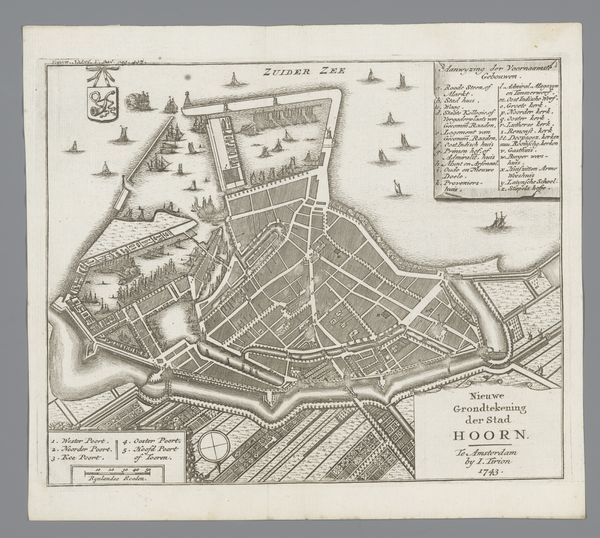
Loopgraven van het Staatse leger onder Willem Pinsen van der Aa tijdens het beleg van Den Bosch, 1629 1629 - 1630
0:00
0:00
print, engraving
#
dutch-golden-age
# print
#
old engraving style
#
geometric
#
line
#
cityscape
#
history-painting
#
engraving
Dimensions: height 288 mm, width 364 mm
Copyright: Rijks Museum: Open Domain
Curator: Ah, yes, here we have a fascinating print titled "Loopgraven van het Staatse leger onder Willem Pinsen van der Aa tijdens het beleg van Den Bosch, 1629," dating from approximately 1629 to 1630. The piece, created by an anonymous artist, offers a birds-eye view of military entrenchments. Editor: My first impression is, oddly, of calmness. All those precisely etched lines and geometric shapes—it's like a mathematical puzzle disguised as a battle plan. It makes conflict seem so…organized, clinical almost. Does that remove the human element for you? Curator: Indeed. Its meticulous detail allows us to consider the strategic and structural aspects of warfare at that time. Observe how the engraver utilized line to depict varying terrains and fortifications; a visual encoding of military procedure. Editor: Absolutely, I see it, the cross-hatching suggesting textures, flooded fields, intricate forts… But still, I can’t shake this feeling of disconnect. All this effort to map out destruction. Did people understand what that actually represented on the ground in a more profound sense? Curator: Perhaps the very act of rendering it as a cartographic study served to distance viewers from its immediate reality, permitting a level of engagement focused more on analysis than empathy. It converts lived reality into symbols— a network of semiotic relationships. Editor: A cold reduction, perhaps? Looking at it another way, one could almost see the bare bones of early urban planning, too, this stark visual grammar laid out across the land. Did the style and conventions it followed come across as glorifying war to contemporary audiences, or did its stark depiction of troop positions and geography carry any implicit anti-war message? Curator: That tension is precisely what gives such works lasting interest. The print oscillates between celebrating military engineering and coldly charting potential desolation. This artistic ambiguity provides room for varied interpretation. Editor: Right, a map open to subjective journeys. Ultimately, that's what pulls me in, that capacity to simultaneously reveal and obscure something profound. I keep looking for people here, and finding none; only empty battlements. Thanks for unlocking a bit of this piece with me! Curator: It has been a stimulating examination, highlighting how formalism helps us access art's complexities through precise analysis of its visual language. A worthy example, indeed.
Comments
No comments
Be the first to comment and join the conversation on the ultimate creative platform.
